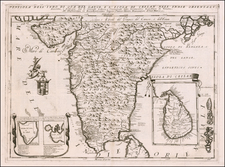The Road of Palleacate off the Coast of Coromandell is a well-detailed nautical chart showcasing a prominent passage on the Coromandel Coast, drawn from the renowned Van Keulen cartography house. The depiction of Palleacate (modern-day Pulicat) along with the neighboring area of Tripetoor and the famed Fort St. George is meticulous, illustrating the geography and important landmarks along this coastal stretch.
It represents a slice of maritime history, underscoring the value that these charts held in safely guiding seafarers along uncharted or unfamiliar waters. The purpose was not only to provide details of depth and hazards but also to offer insights into the human establishments along these shores, offering a sense of context and geography that would have been indispensable to sailors of the time.
Simultaneously on the same sheet, there's another chart labeled The Road of Tengepatnam or Fort St David on the Coast of Coromandel, again drawn from Van Keulen's work. This chart showcases the Tengepatnam area, also known as Tegenepatnam, where a Dutch Factory was located. The mention of a fort belonging to the Moors, points to the multi-cultural influences in the region.
Both charts were published on 12th May 1794 by Laurie & Whittle, a leading map and chart publisher based in Fleet Street, London. They exemplify the maritime cartography of the period, characterized by a combination of topographical detail, hydrographic data, and an insight into the sociopolitical landscape of the period.
Ultimately, these charts provide a fascinating window into the past, offering not just an insight into the geographical understanding of the time, but also a glimpse into the trading routes and maritime activities of the late 18th century. The combination of practical navigational data and cultural landmarks makes them a valuable resource for both historians and navigational enthusiasts.
Robert Laurie (ca. 1755-1836) and James Whittle (1757-1818) formed their Fleet Street, London-based firm upon the 1794 death of their employer Robert Sayer, himself one of the dominant print and mapmakers of the last half of the 18th century.
Laurie & Whittle started managing Sayer's business as early as 1787. They took over all managerial duties when Sayer's health flagged in 1792, and they changed the imprint in 1794 upon his death. Sayer left the two a 21-year lease on the shop (at £100 a year) and on Sayer's Bolt Court premises, as well as an option to acquire stock and equipment at a preferential price of £5,000 payable over three years.
Robert Laurie retired from the firm in 1812, and his role was assumed by his son, Richard Holmes Laurie (1777-1858). The younger Laurie worked with James Whittle until the latter died in 1818. After R. H. Laurie died in 1858, Alexander George Findlay, FRGS (1812-1875) purchased the firm from his daughters. The firm continues today under another name, specializing in yachting charts.
Laurie & Whittle were prolific print and map publishers, and throughout their careers, they produced numerous very important and rare works. They carried on Robert Sayer's atlas business and were responsible for editions of The Complete East-India Pilot and The American Atlas.









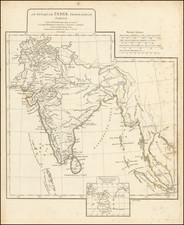
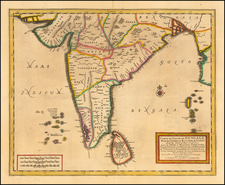
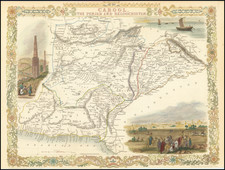
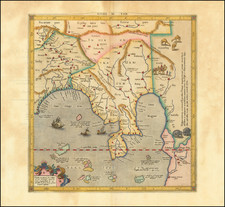
![[ India ] Magni Mogolis Imperium](https://storage.googleapis.com/raremaps/img/small/99730.jpg)
